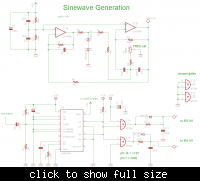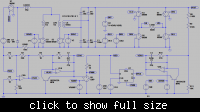sinewave123
Junior Member level 1

Hello everyone, I have found a lot of threads related to my query but it's exhaustive to be in everyone's conversation so I decided to post my own. I am now working for a university project (12 VDC-220VAC pure sine inverter design). I started learning about inverter design just a few months ago so I have a relatively little knowledge about this. A friend of mine is helping so my learning gets accelerated. However, we got into trouble when the MOSFETs (IRF480) are heating up with higher voltage DC input. It only works well with 15 VDC fed into the mosfet fullbridge circuit. Can you share any suggestion?
MOSFET fullbridge is driven by IR2110 and PWM signal is generated by SG3524. How can I make it work with higher voltage DC? Should I use DC/DC converter to convert 12VDC to 350VDC before feeding it to the mosfet fullbridge? Or just step up the lower voltage output sine (from 15VDC input) into higher sine voltage using a transformer coupled after the LC filter so the mosfet fullbridge is saved from high DC voltage input?
MOSFET fullbridge is driven by IR2110 and PWM signal is generated by SG3524. How can I make it work with higher voltage DC? Should I use DC/DC converter to convert 12VDC to 350VDC before feeding it to the mosfet fullbridge? Or just step up the lower voltage output sine (from 15VDC input) into higher sine voltage using a transformer coupled after the LC filter so the mosfet fullbridge is saved from high DC voltage input?





